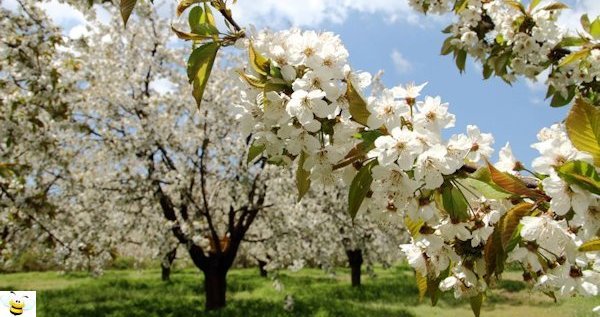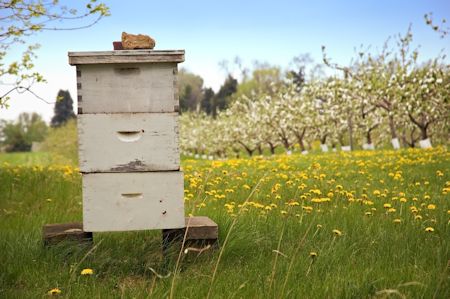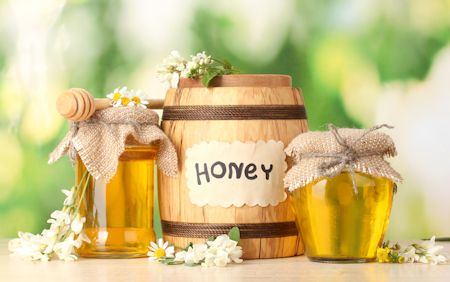Honey Plants Put the Jam in Your
Honey!
Honey plants are responsible for uniqueness among honeys. If you pay attention to the fine details there is a whole world of flavor experience to be enjoyed with honey and maybe... no two experiences will be exactly alike. Sweet! Huh?

WHIZZ NOTE: Have you ever seen the movie Ratatouille? The state of reverie that Remy experiences when he discovers new flavors is the same experience the honey connoisseur can expect! Floral plants provide different nectar sources that the honeybees use... making various honeys unique.
Honey packers of various sizes many times have a commercial goal in mind and overlook the value that individual honey plants offer. Studies have been done that seem to indicate you can sell more honey if the experience is consistent and repeatable.
The only way to do that is to mix honey gathered from various sources in portions that provide the flavor, aftertaste, color, texture, and shelf life desired by this commercially focused business owner.
Unfortunately... much money, time, and effort will be spent trying to improve what has been naturally provided by the honey bees and the unique nectar sources they used.

WHIZZ NOTE: I champion the natural honey experience straight from the honey plants into the hive and onto your spoon... as direct and unaltered as possible. You may like one flavor experience more than another but you always know it was pure and natural, just as the honeybees intended.
These distinct honey experiences are directly related to the plants the bees used as a source for nectar or pollen. The nectar and pollen will vary in sugar compounds, minerals, vitamins, amino acids, enzymes, proteins and other nutrients...all factors in determining the resulting color, flavor, texture, and health benefits of honey.
A honey plant can be a tree, evergreen, shrub, garden flower, weed, or farm crop. Nearly all flowering plants produce some amount of nectar. It is a “gift of design” that God has provided for a plant to attract pollinators so its’ life cycle may continue. Humming birds, butterflies, and insects of various types including honeybees can be attracted to all flowering plants in general.

Floral plants qualify as honey plants based on a very simple condition. They should be capable of creating a nectar flow sufficient enough to provide readily accessible surplus nectar for the honey bees. Some do not create enough nectar for collecting and others produce enough nectar but it may be physically difficult for the honey bees to access the nectar. Honey plants are those whose nectar is provided in quantities sufficient enough that honeybees can make surplus honey to share.

WHIZZ NOTE: Flower properties that naturally attract us are color, shape, and aroma with lots of sweet nectar. Simply put, if we don’t like the flowers it cannot be a honey plant!
Honey may be categorized by a beekeeper based on the primary sources that where available during the nectar collection period for any honey harvested from the hive. This honey will fall into two primary categories; monofloral and multifloral.
Monofloral: This is honey made with nectar from primarily a single identifiable nectar source. The honey is watched, marked, and harvested by the beekeeper using timing methods intended to keep this honey isolated for marketing and consumption.

WHIZZ NOTE: You might have guessed it would be practically impossible to keep track of tens of thousands of bees from a single hive all working together in the flower fields. Probably NO honey is 100% monofloral. However a good beekeeper should have a good idea of what honey plant is most influencing the character of his or her honey.
Multifloral: This is honey made with nectar from many local sources. A single nectar source influencing the honeys’ character in a unique way is simply not possible to identify. It is common to call this type, wildflower honey.
There are more than 300 commonly identifiable nectar sources in North America alone! Following is a shortened list of these plants mostly in North America but also a few important ones from around the world... the most notable for exceptional health benefits is active manuka honey.
|
Major Monofloral Sources:
|
Major Multifloral Sources:
|
The study of honey plants is important for a beekeeper and honey consumer alike. A beekeeper needs to know what to expect for nectar flows in his area to best assist the honey bee. A honey consumer needs to know what to expect for flavor, color, texture, shelf life, and health benefits of honey that vary based on the primary nectar source.
If you find a local tree blooming like crazy and are stumped to know what it is but desperate to find out...
I have found Arbor Day Foundation has an online tree identification field guide that is very helpful called "What Tree is That?"
I recently used this to identify a buckeye tree in my location... I will study this plant and watch the honeybees closely this spring to determine if it is a significant local source of nectar or pollen.
Have A Great Honey Plant That Works For You?
Do you have an experience with a great honey plant that provides an abundant nectar flow or a unique honey characteristic? Share it!





